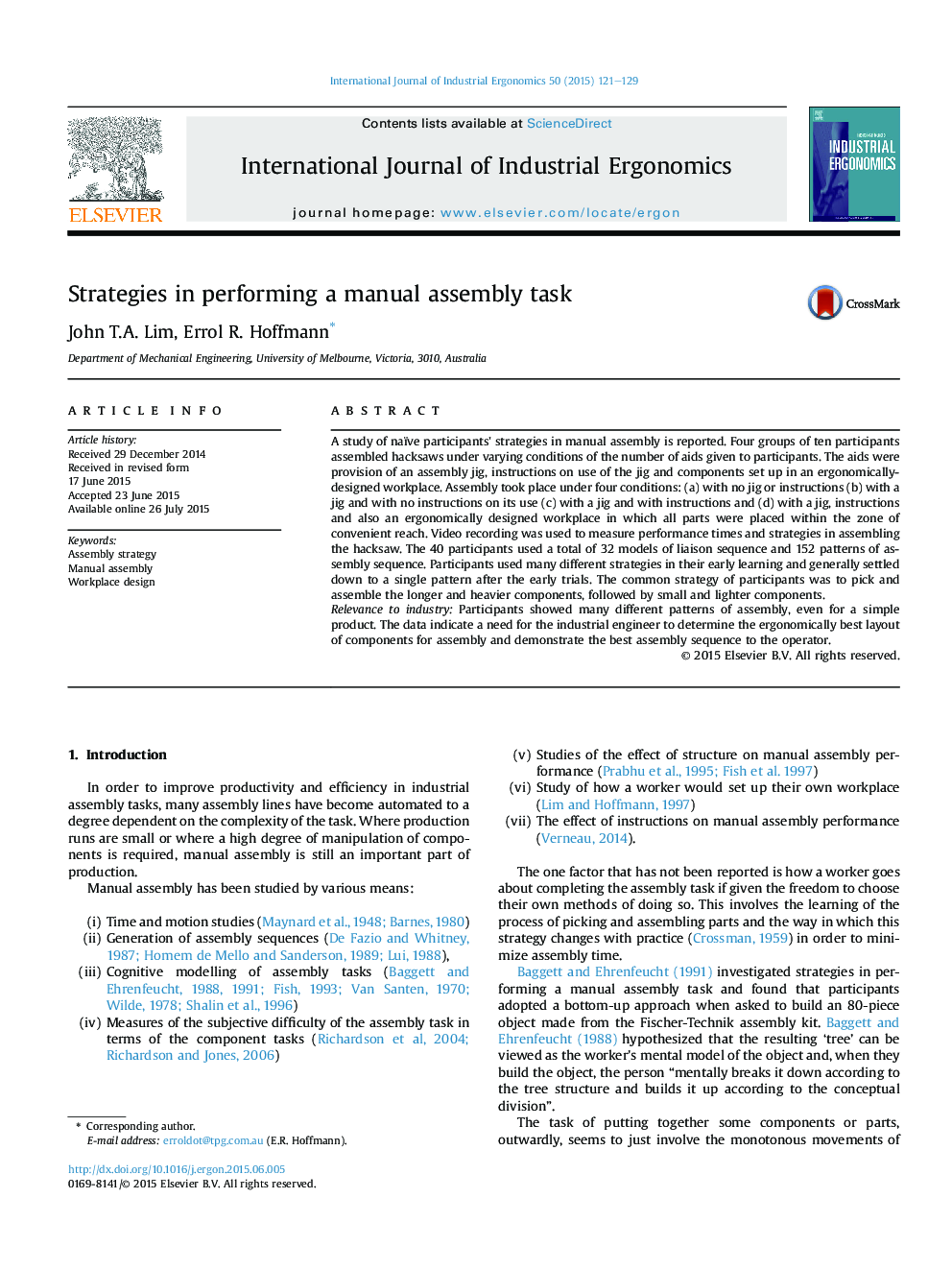| Article ID | Journal | Published Year | Pages | File Type |
|---|---|---|---|---|
| 1095857 | International Journal of Industrial Ergonomics | 2015 | 9 Pages |
•Participants were given different levels of aids for a manual assembly task.•Aids were a jig, instructions on use of jig and an ergonomic workplace design.•Number of arrangements of assembly order depended on aids given.•Bottom-up assembly order was mostly used when all aids were given.•Greatest number of assembly patterns occurred when only the jig was supplied.
A study of naïve participants' strategies in manual assembly is reported. Four groups of ten participants assembled hacksaws under varying conditions of the number of aids given to participants. The aids were provision of an assembly jig, instructions on use of the jig and components set up in an ergonomically-designed workplace. Assembly took place under four conditions: (a) with no jig or instructions (b) with a jig and with no instructions on its use (c) with a jig and with instructions and (d) with a jig, instructions and also an ergonomically designed workplace in which all parts were placed within the zone of convenient reach. Video recording was used to measure performance times and strategies in assembling the hacksaw. The 40 participants used a total of 32 models of liaison sequence and 152 patterns of assembly sequence. Participants used many different strategies in their early learning and generally settled down to a single pattern after the early trials. The common strategy of participants was to pick and assemble the longer and heavier components, followed by small and lighter components.Relevance to industryParticipants showed many different patterns of assembly, even for a simple product. The data indicate a need for the industrial engineer to determine the ergonomically best layout of components for assembly and demonstrate the best assembly sequence to the operator.
